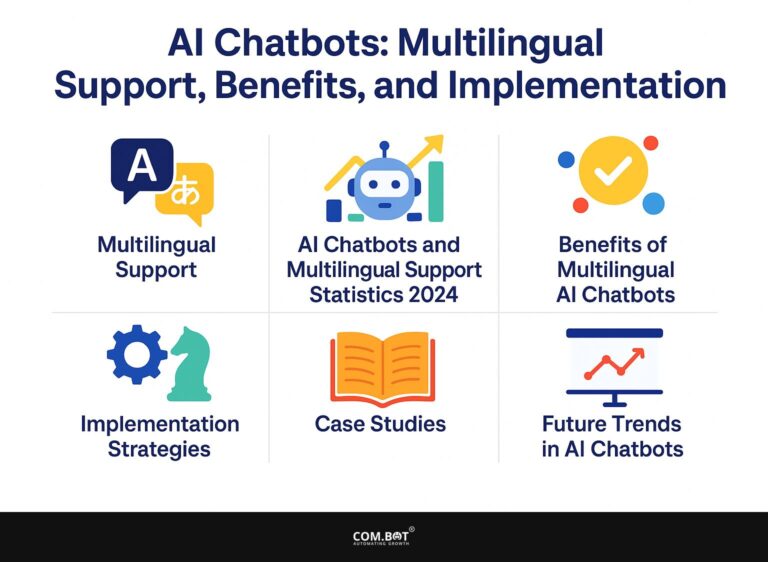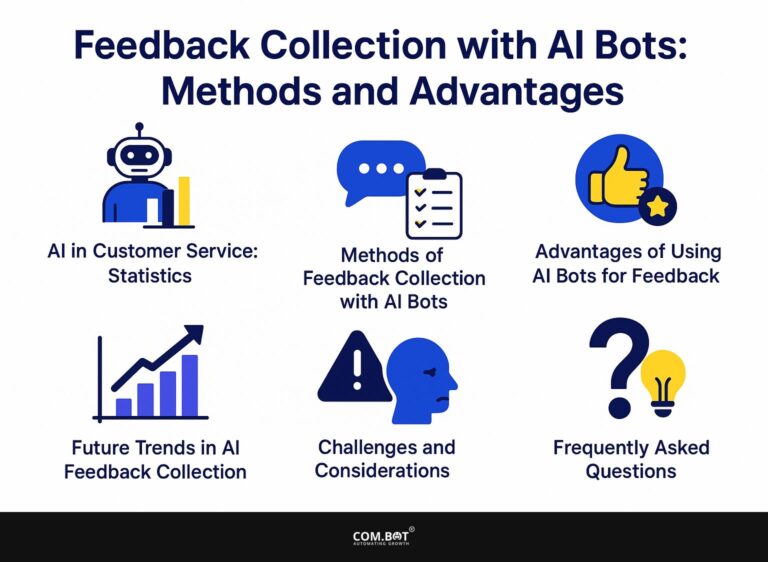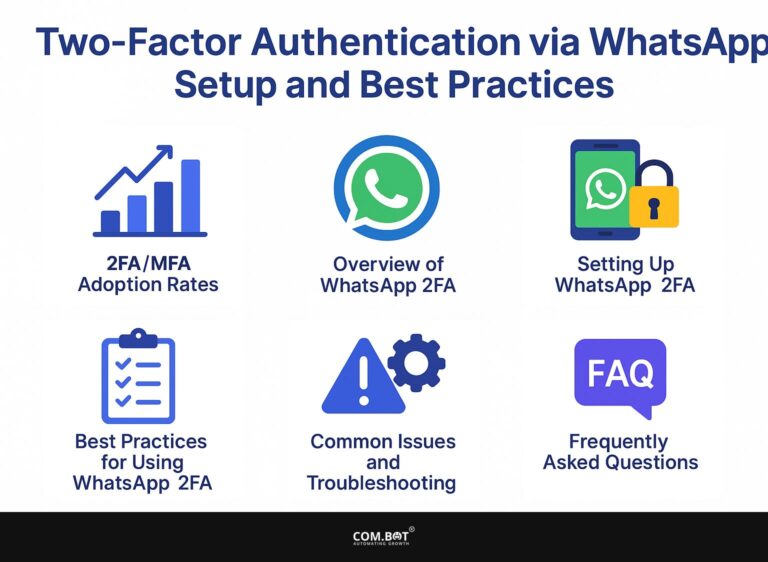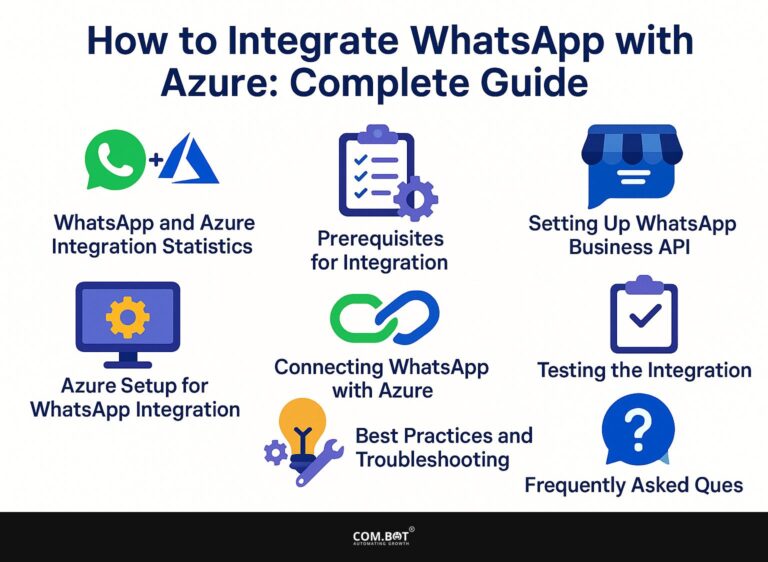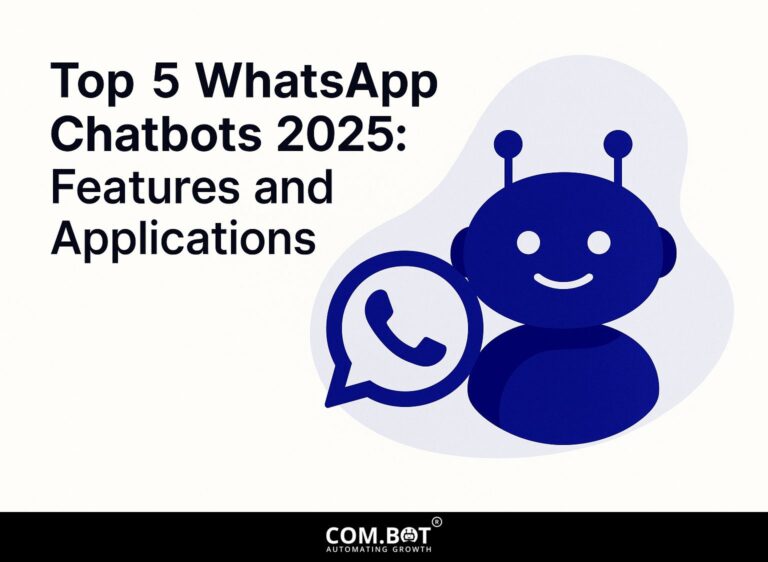Handling Webhook Events: Strategies and Use Cases
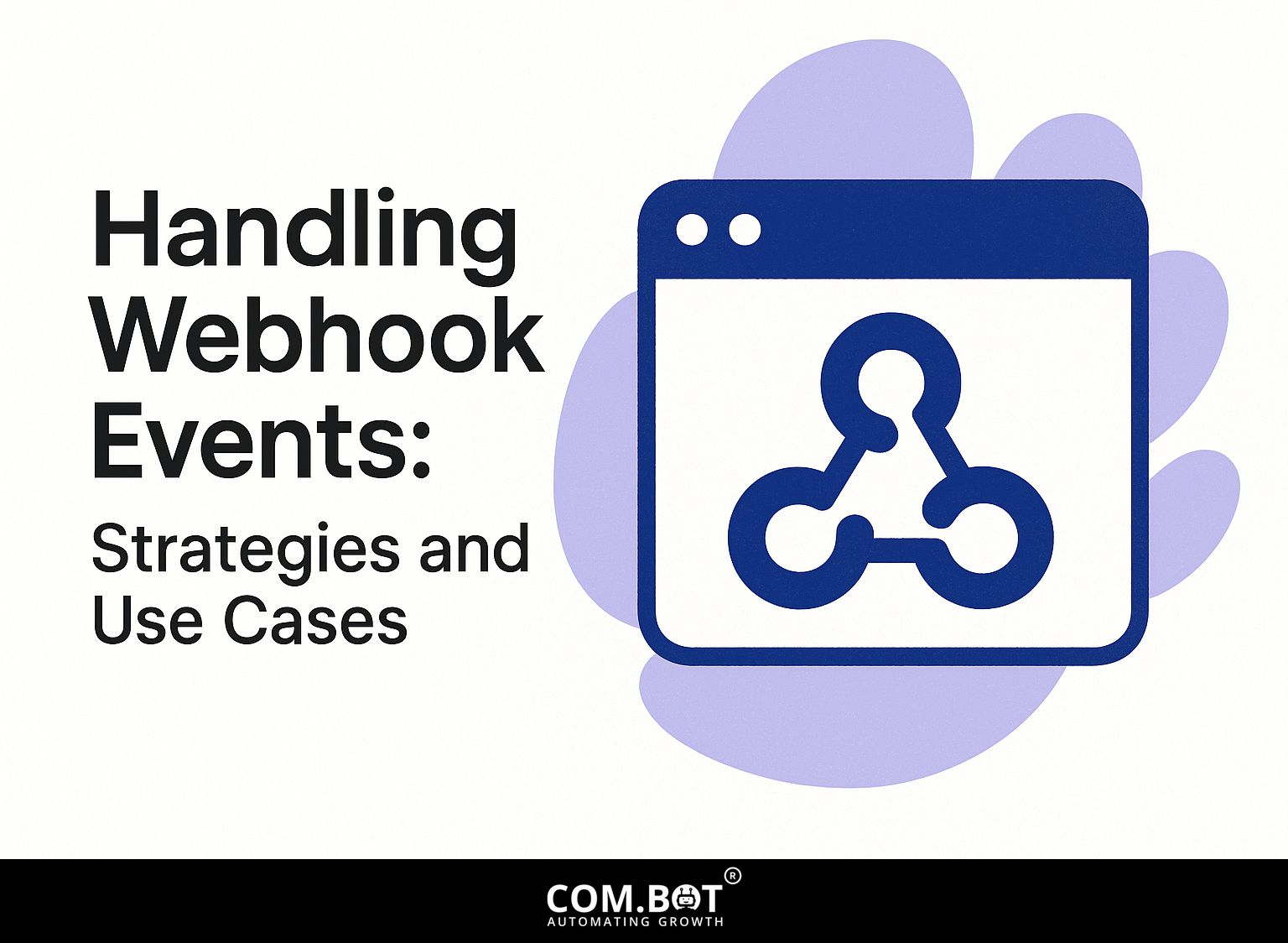
Webhook events are a powerful tool for real-time communication between applications, enabling seamless data exchange through HTTP requests. Industry experts like Jochen Mller of EcholoN highlight their significance in modern development. This article looks at useful methods and examples for managing webhooks, keeping your systems quick to respond and safe. Learn how to use these connections to improve your app’s speed and how users interact with it.
Key Takeaways:
- Webhooks allow for real-time communication between applications, improving efficiency and enabling timely actions.
- Payment processing, real-time notifications, and data synchronization are just some of the common use cases for webhooks.
- To handle webhook events well, create a strong endpoint, follow security guidelines, and frequently check and watch for problems.
- 1 Common Use Cases for Webhooks
- 2 Webhook Event Statistics
- 3 Strategies for Handling Webhook Events
- 4 Testing and Debugging Webhooks
- 5 Monitoring and Logging
- 6 Frequently Asked Questions
- 6.1 1. What are webhook events and why are they important in web development?
- 6.2 2. What are some common strategies for handling webhook events?
- 6.3 3. How can businesses use webhook events to improve their operations?
- 6.4 4. What kind of use cases are suitable for implementing webhook events?
- 6.5 5. Are there any security considerations when handling webhook events?
- 6.6 6. How can developers troubleshoot issues with webhook events?
1. Definition and Purpose
A webhook is a user-defined HTTP callback that triggers an event-driven mechanism, allowing applications to receive real-time updates without polling.
Unlike traditional APIs, which require periodic requests to check for updates, webhooks push information directly to your specified endpoint as soon as an event occurs.
For example, you can create a webhook in GitHub to alert your application when a new issue is added. To set this up, go to your repository settings, enter a webhook with your server’s URL, and select the event types you want to track. This setup reduces server load and improves response times.
2. How Webhooks Work
Webhooks operate by sending JSON payloads over HTTP requests to a predefined endpoint when specified events occur, enabling seamless data synchronization.
When an event triggers a webhook, it sends a request containing relevant data to an endpoint, typically a URL that corresponds to your server. Make sure your server can manage these requests properly by creating endpoints that can handle incoming data.
For example, if integrating with a payment processor, your endpoint should parse the payment details and update your database accordingly.
Add logging to keep track of incoming data and create error handling for situations where the endpoint cannot be reached or the data is incorrect. This will keep the data flowing smoothly and the system reliable.
Common Use Cases for Webhooks
Webhooks are used in payment processing, real-time alerts, and keeping data up-to-date, which are some of the most effective uses, especially when leveraging event-driven architectures. This can be further explored in solutions like the Com.bot Event-Driven Workflow Bot.
Webhook Event Statistics
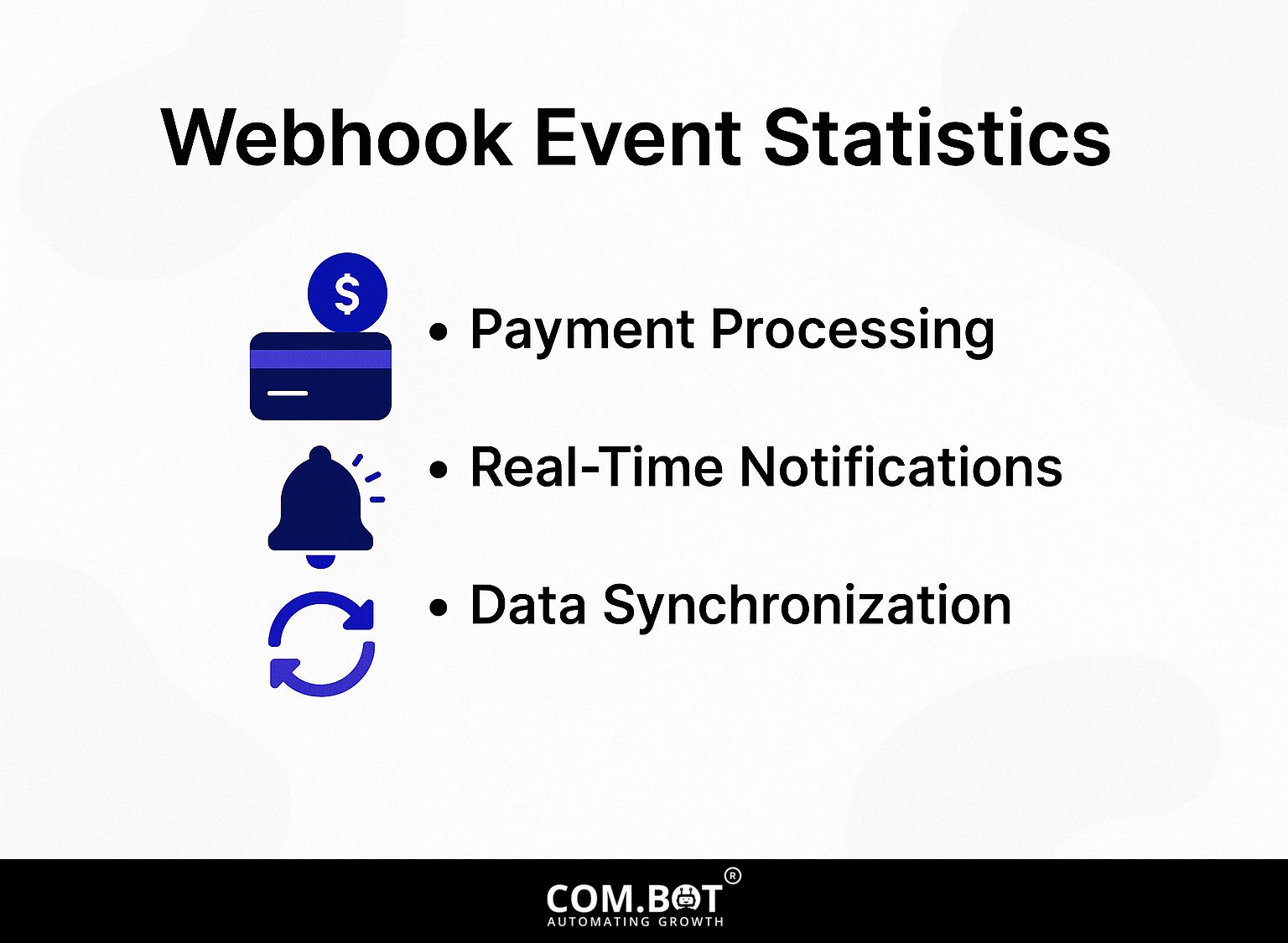
The Webhook Event Statistics The report gives complete information on how webhooks are used and how well they work, but the JSON data does not have specific numbers. Webhooks are messages that apps send automatically when an event occurs. They are a way for applications to communicate and trigger actions in real-time.
This report would generally encompass various key performance indicators (KPIs) related to webhook events. These might include:
- Event Volume: The total number of webhook events sent over a specific period, helping to measure the usage and dependence on real-time notifications.
- Delivery Success Rate: The percentage of webhook events successfully received by the intended endpoint, indicating the reliability and efficiency of the webhook implementation.
- Response Times: The typical time it takes for the server to handle and reply to webhook events is important for apps that need instant data updates.
- Error Rates: The frequency of failed webhook deliveries due to network issues, incorrect endpoints, or other errors, helping identify areas for improvement in the webhook system.
- Popular Events: The most frequently activated webhook events that show how users interact with the system and depend on webhooks.
Careful examination of these metrics can show patterns and trends, like the most active times for webhook usage, frequent failure reasons, and how well retry methods work. Knowing these statistics is important for improving webhook performance, making sure delivery is reliable, and enhancing the user experience.
While the Webhook Event Statistics The report doesn’t list any specific data from the given JSON. Instead, it provides helpful details about the practical use of webhooks. By monitoring and studying these events, organizations can improve their live communication tools, making their applications more responsive and reliable.
1. Payment Processing
In e-commerce, webhooks make payment processing easier by informing merchants about transaction statuses through notifications.
When a transaction occurs, payment gateways like Stripe and PayPal instantly send webhooks to defined URLs with detailed information, such as payment success or failure.
For example, if a customer pays via Stripe, the merchant’s server receives a JSON payload indicating the transaction outcome. Merchants can use platforms like Zapier to trigger specific actions based on these notifications, such as updating inventory or sending confirmation emails.
This real-time communication improves the customer experience and lets merchants handle their operations more easily without manual effort.
2. Real-Time Notifications
Webhooks enable real-time notifications for applications, sending alerts immediately when events like ticket updates occur in customer support systems.
By integrating webhooks with platforms like Slack or Discord, teams benefit from instantaneous communication. For example, you can set up a webhook that sends a message to a specific Slack channel every time a new support ticket is created, so team members can respond quickly.
Using tools like Zapier or Integromat, you can easily connect your support system to these communication platforms, ensuring alerts are sent without manual intervention. This automatic system speeds up responses and simplifies the workflow so that everyone stays informed and engaged.
3. Data Synchronization
Using webhooks to sync data keeps various applications updated immediately, greatly reducing the need for manual data entry.
To implement webhooks effectively, start by identifying the systems that need to communicate, such as your CRM (like Salesforce) and marketing automation tool (like HubSpot).
Next, set up a webhook URL in your CRM to capture specific events, like new lead submissions.
- Use tools like Zapier or Integromat to make the process automatic, sending data from the CRM to your marketing platform right away.
- This method allows for seamless updates, ensuring no potential leads are lost, while dramatically improving your team’s efficiency.
Strategies for Handling Webhook Events
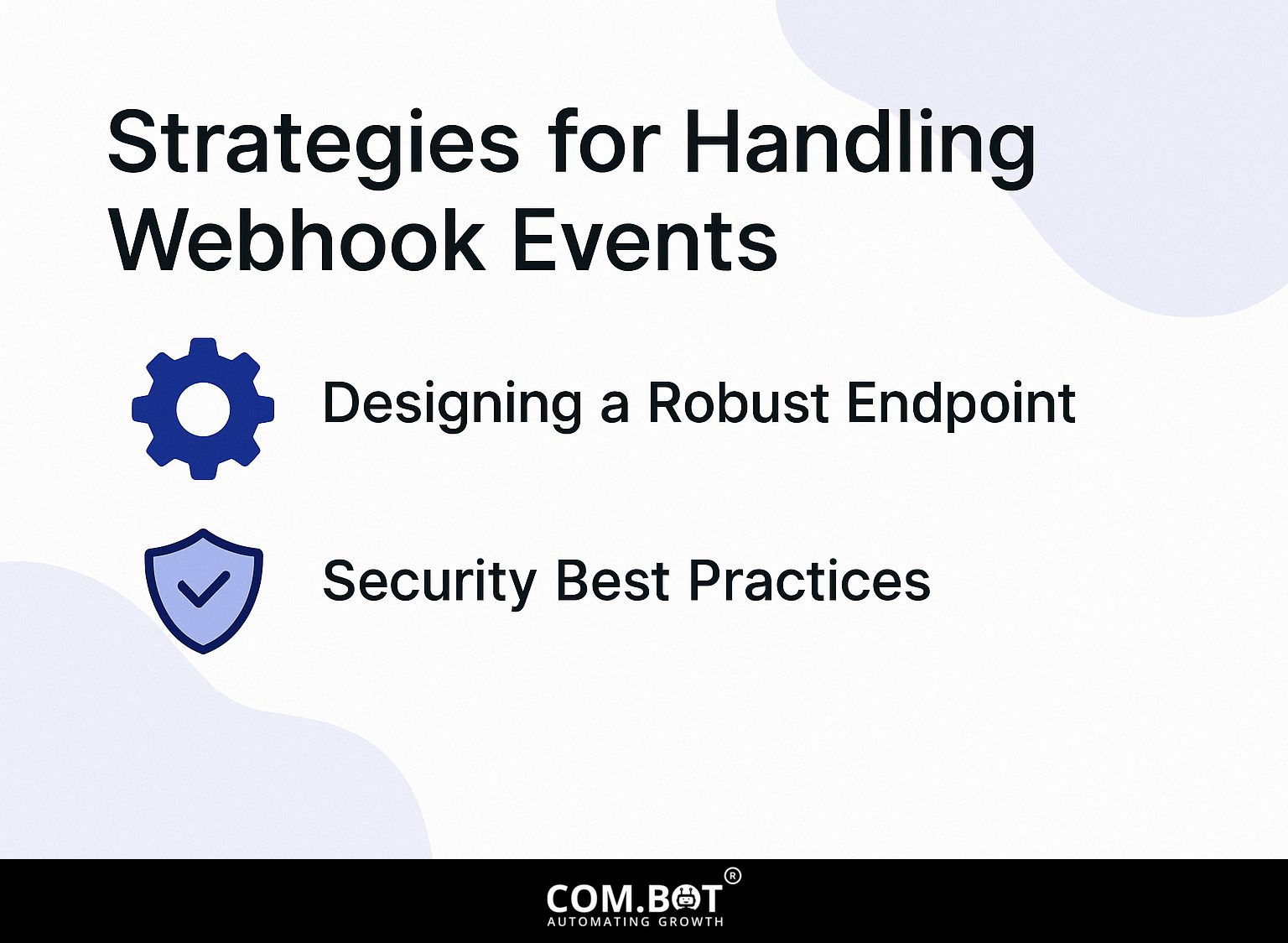
Managing webhook events well needs strong plans for creating endpoints and setting up security. For those interested in a deeper understanding of how webhook events fit into broader AI frameworks, our detailed exploration on Webhook Events in AI Integration offers valuable insights.
1. Designing a Robust Endpoint
A strong webhook endpoint should be set up to deal with lots of visits and different types of events so that apps work dependably.
Set up rate limiting using tools like express-rate-limit to handle lots of visits effectively, keeping your endpoint active even when busy.
To design an effective webhook in Express.js, start by defining different routes for various event types, such as ‘/created’ and ‘/updated’. Use middleware like body-parser to read incoming requests without trouble.
Here’s an example for handling a ‘user.created’ event:
javascript app.post('/webhook/user.created', (req, res) => { const userData = req.body; // Process user creation logic here res.status(200).send('User created'); });Implement rate limiting with tools like express-rate-limit to manage high traffic effectively, ensuring that your endpoint remains responsive under load.
2. Security Best Practices
Implementing security best practices, such as validating payload signatures, is critical for protecting webhook endpoints from malicious attacks.
Begin by adopting essential security measures. Implement IP whitelisting to restrict access to known addresses, and enforce HTTPS to encrypt data transmission. For validating incoming payloads, you can use HMAC signatures.
Here’s a practical example in Python:
python import hmac import hashlib def validate_signature(secret, payload, received_signature): expected_signature = hmac.new(secret.encode(), payload.encode(), hashlib.sha256).hexdigest() return hmac.compare_digest(expected_signature, received_signature)This method makes sure that only valid requests are handled, greatly improving your webhook security.
Testing and Debugging Webhooks
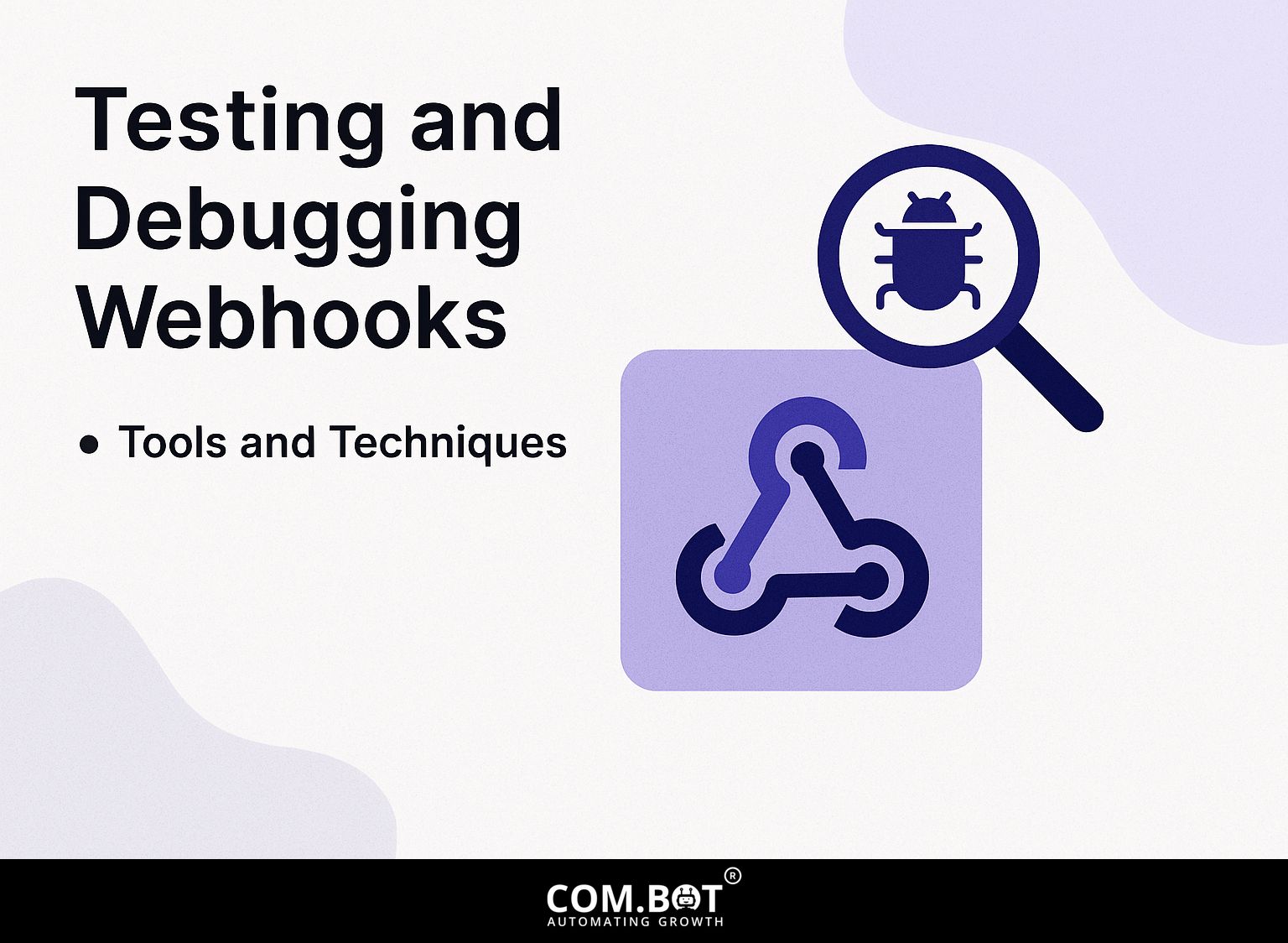
Checking and correcting problems in webhooks is necessary for them to function reliably, using tools that make this task easier. Additionally, understanding different webhook integration setups, such as with the WhatsApp API, can provide further insights into optimizing webhook performance.
Tools and Techniques
Using tools like ngrok or Postman allows developers to test webhook endpoints locally and simulate real-time HTTP requests.
To start, download ngrok from its website, then expose your local server by running `ngrok http `. This command will provide you with a public URL to connect to your webhook.
Next, open Postman and create a new request to this URL, selecting the appropriate HTTP method (e.g., POST). You can then simulate events by adding relevant JSON data in the body and hitting ‘Send.’
You can test how your application processes incoming webhook requests before you make it available to everyone.
Monitoring and Logging
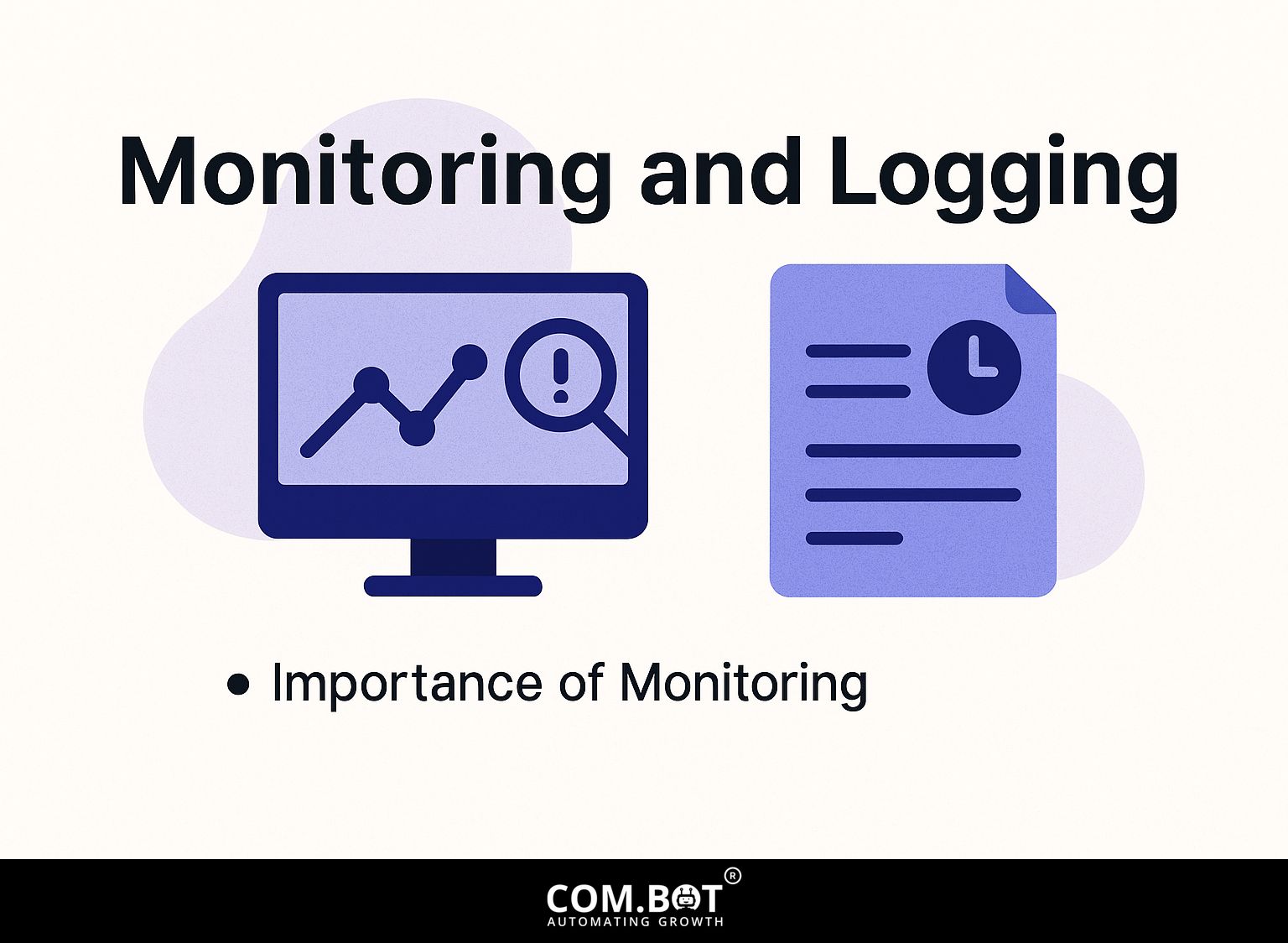
Keeping an eye on webhook activity and recording it is essential for checking how things are working and quickly finding any problems. For effective monitoring, it’s important to understand the different types and applications of webhook events, especially in AI integration. Implement this by following the methodology outlined in our instructional guide on Webhook Events in AI Integration.
Importance of Monitoring
Monitoring webhook performance can significantly impact application scalability and reliability, as it helps identify bottlenecks in real-time. Key metrics to track include:
- Response times, which indicate how quickly webhooks execute
- Failure rates, highlighting any issues in delivery
Tools like Prometheus can collect this data, while Grafana visualizes it in user-friendly graphs. Setting alert limits for response times-like informing developers if it goes beyond 500 ms-helps them fix possible delays.
Services like Datadog offer detailed monitoring and send notifications through Slack or email if there are webhook errors. Putting these methods into action encourages a forward-thinking attitude to keep up the best performance.
Frequently Asked Questions
1. What are webhook events and why are they important in web development?
Webhook events are notifications that are triggered by specific actions or changes in a web application. They are important because they allow instant communication between systems and can control tasks automatically, making web development faster and more reactive.
2. What are some common strategies for handling webhook events?
Some common strategies for handling webhook events include using a reliable third-party service, implementing a queuing system, and setting up a dedicated server to receive and process incoming events.
3. How can businesses use webhook events to improve their operations?
Companies can use webhook events to make processes easier, like automatically completing orders, sending alerts to customers, and connecting different systems. This can save time and improve overall efficiency.
4. What kind of use cases are suitable for implementing webhook events?
Webhook events are suitable for use cases where real-time communication is necessary, such as in payment processing, inventory management, and customer support. They are also useful for automating repetitive tasks.
5. Are there any security considerations when handling webhook events?
Yes, security is an important aspect to consider when handling webhook events. It’s important to make sure the webhook URL is safe and the data sent is encrypted. Implementing authentication and access controls can also help prevent unauthorized access to sensitive data.
6. How can developers troubleshoot issues with webhook events?
If there are issues with webhook events, developers can check the logs to see if the event was triggered and if any errors occurred. They can also test the event by manually triggering it or using a testing tool. It’s important to have proper error handling to manage any unexpected errors.
